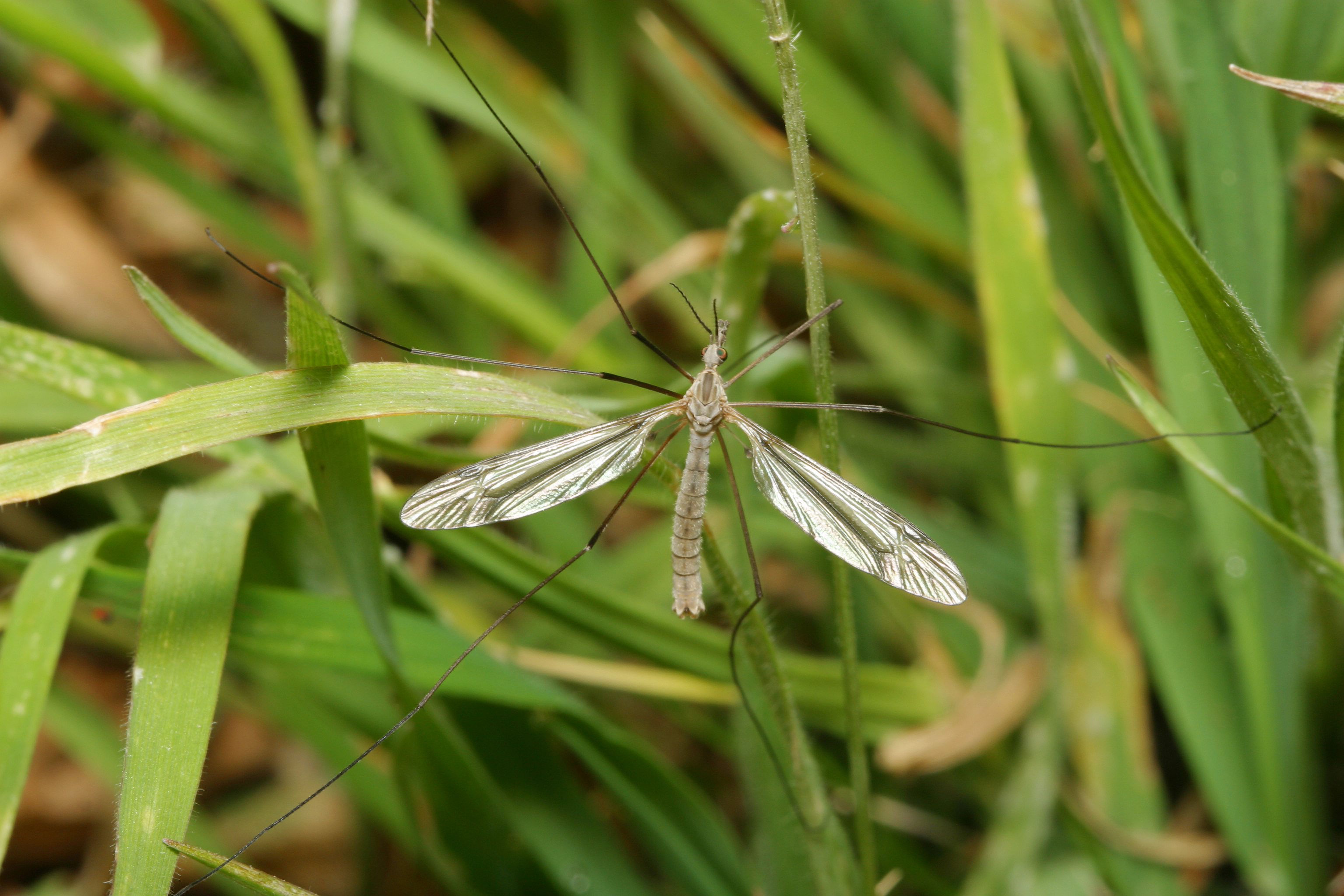
The long-legged crane flies are one of our early harbingers of spring. Like all flies, crane flies have only two functional wings–though the remnants of the second set of wings, borne by most insects, are visible here as small knobby structures behind the flying wings.
While concern about mosquitoes floats over the digital airwaves this month, annual flying hosts of crane flies quietly fill the real air over cities and fields throughout Texas. Crane flies are most apparent each year in our state during the late winter/early spring. I think of them as one of the first signs that spring is nearly upon us.
The common name “mosquito hawk” is sometimes given to these flies; however the name usually comes with the belief that these clumsy, long-legged insects are predators, perhaps on mosquitoes. Nothing could be further from the truth. Crane flies are among the gentlest of insects. Some are nectar feeders, sipping sweet sugars from plants and possibly helping out a little with pollination in the process. Other species lack mouth parts entirely. Instead, the adults live out their short lives relying on fat reserves built up during their underground larval stage.

Adult crane flies are most commonly found in low, leafy vegetation around streams and lakes. But at certain times of year they are common in urban areas around houses and doorways.
Crane fly larvae are rarely seen by all but the most dedicated (nerdy?) naturalists. These long, legless, worm-like creatures may be found in many types of moist soil, sandy areas along streams, rotting vegetation, mosses, or even feeding on organic matter in the nests of birds and mammals. Very few are considered pests, though the European leatherjacket can be a pest of turfgrass in Europe and some parts of the U.S. (not Texas).
Many people see crane flies and perhaps think that the mosquitoes are coming out larger and earlier every year. But crane flies are generally active before our pest mosquitoes. Crane flies can be distinguished from mosquitoes by their larger size; but also by their wings, which lack the scales found on mosquito wings.
As for their place in nature? They are undoubtedly greatly appreciated by hungry birds at this time of year, as well as smaller mammals, fish, spiders and predatory insects.
Enjoy crane flies while they last. And keep in mind that as adults, these flies only have love on their tiny minds. The sole purpose of the adult crane fly is to mate and, for the females, to lay eggs for next spring’s crop of flies. Crane flies are harmless to handle, so the next time one makes its way indoors, simply cup it gently to release outdoors. Think of it as a romantic gesture.
